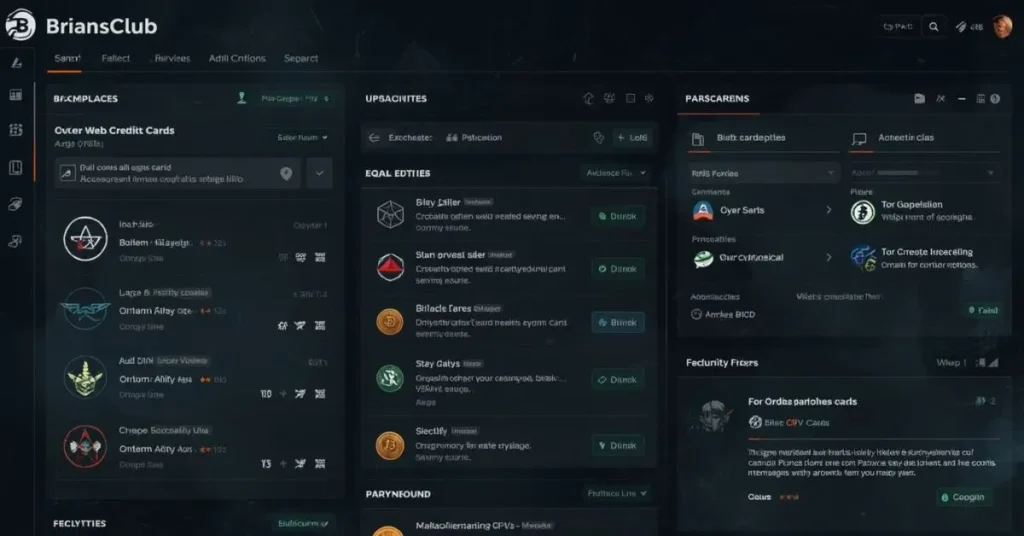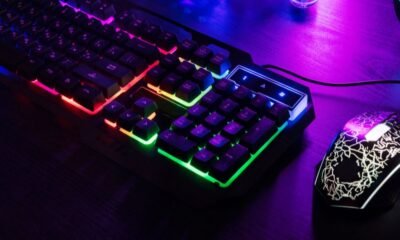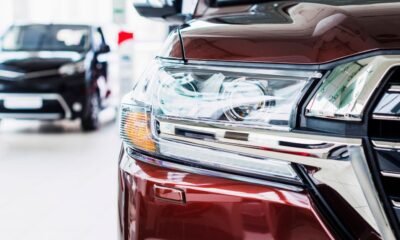TECH
Heads Up: The Craft and Comfort of Welding Caps

Heads Up A welding cap is more than just a piece of flame-resistant cotton—it’s a vital element of personal protective equipment (PPE) that merges craft, comfort, and safety under the welding helmet. Whether you’re shielding against sparks and molten metal or managing sweat and scalp irritation, the right heat-resistant fabric headgear plays a key role in every welding task.
Why Welders Wear Caps
Shielding from Sparks, Spatter, and UV Radiation Heads Up
During welding operations, molten metal droplets—spatter—can fly unpredictably, risking burns to exposed skin and scalp. A well-designed cotton or leather welding cap is thick enough to intercept these tiny hazards before they cause harm It also helps protect the ears and neck from direct exposure to sparks and radiant UV heat from the arc.

Enhancing Helmet Fit & Stability
A snug fitting skull cap or bandana-style cap minimizes movement under a welding hood, ensuring the helmet stays properly aligned for safety and visibility. The soft-bill cap design prevents the helmet from slipping, offering consistent protection
Managing Heat and Sweat
Welding often takes place in high-temperature environments where perspiration and overheating are common challenges. Caps made from breathable materials with moisture-wicking liners help absorb sweat and facilitate airflow, keeping welders cool and focused throughout long sessions .
Adapting to Weather Conditions
In colder climates or chilly workshops, welding caps serve a dual purpose: insulation and comfort. Cotton or Nomex caps can trap warmth, preventing chills under the helmet
Materials & Certification: Choosing the Best Cap
Flame-Retardant Cotton vs. Leather, Nomex, Kevlar
- Cotton and Canvas: The industry standard—soft, breathable, and inherently flame-resistant when treated. Comfortable for daily use and absorbent for sweat .
- Leather: Offers superior protection against heavy slag and spatter in overhead welding, though less breathable.
- Nomex, Kevlar, Modacrylic: Premium materials certified to withstand high heat. Kevlar caps, for example, require less frequent replacement due to durability
Formal Standards
High-quality caps are often certified to EN 11611 or ISO 11611 standards—indicating tested flame and thermal resistance Some brands like Proban® meet Class 1 A1/A2 for medium-duty welders, offering both comfort and compliance
Design Details that Matter
Multi-Panel Construction & Flat Seams
Caps with multiple sewn panels conform more closely to the head, reducing pressure points. Flat sewing seams prevent rubbing under helmets—a small detail that enhances comfort significantly
Brim and Ear Protection
A soft, side-adjustable brim shields the ear canal when welding in different positions—especially critical for pipefitters and ironworkers Some caps include extra flaps or neck curtains to block falling sparks.
Sweatbands and Liners
Caps with built-in absorbent sweatbands or mesh liners wick moisture away, reducing sweat dripping into eyes or helmets. This subtle feature greatly improves focus and comfort
Real-World Insights from Welders
Reddit user feedback reveals the practical value of welding caps:
Women welders, especially those with long or thick hair, recommend styles like bun caps or French braid-friendly caps made from fire-resistant materials to avoid discomfort and protect hair
Choosing the Right Cap
Style Options
Caps come in skull, beanie, bandana, baseball, or rag styles—choose based on comfort and helmet compatibility
Fit and Adjustability
Look for elastic or tie-back features to ensure coverage over ears and neck without slippage .
Coverage Needs
Full-coverage caps with neck drapes protect against overhead spatter; convertible caps offer versatility depending on welding positions
Cooling or Insulating Features
Some caps include cooling liners like moisture-activated gel or cooling fabrics for hot environments
Durability
Reinforced stitching with aramid thread extends lifespan, especially in caps built for heavy usage .
Caring for Your Welding Cap
Regular Washing
Use a gentle cycle with mild detergent—avoid bleach and fabric softeners to maintain flame resistance
Proper Drying
Air dry to preserve size and fabric integrity; low-heat dryer settings are acceptable, but high heat can shrink cotton .
Storage Tips
Store caps in a cool, dry place away from sunlight to avoid fading and fiber degradation. Avoid folding them—hang or lay flat to retain shape
When to Replace
Inspect seams, fabric thinness, and burn marks. Replace when cotton caps show wear or if advanced materials show damage

FAQs
What is a welding cap used for?
It protects welders from sparks, spatter, UV exposure, stabilizes the helmet, and manages sweat, heat, and insulation under the hood
What material is best for welding caps?
100% cotton—flame-resistant and breathable—is most common. Premium options like Nomex, Kevlar, or Modacrylic offer superior heat resistance
Should welding caps cover ears and neck?
Yes, designs with side brims, flaps, or neck curtains help protect vulnerable areas from sparks and spatter
How do I fit a welding cap under a helmet?
Adjust straps or ties for a snug fit that covers ears and skull. The soft brim should be positioned to protect the ear when welding at angles
Can welding caps prevent overheating?
They help manage sweat and airflow. Cooling caps with moisture-wicking liners are available. In hot climates, soaking caps in cool water aids cooling
Conclusion
Welding caps are more than just head coverings—they’re carefully crafted tools engineered to provide flame resistance, sweat control, thermal comfort, helmet stability, and spark protection. Whether made of cotton, leather, or high-tech fibers like Nomex or Kevlar, a well-chosen cap enhances both safety and comfort on the job site.
TECH
How Brainsclub Fueled Global Credit Card Theft

For cybersecurity researchers, financial fraud investigators, and law enforcement agencies, the word Brainsclub immediately signals one of the largest and most notorious dark web operations of the last decade. For years, it functioned as a carding site, selling millions of stolen credit and debit card records to cybercriminals worldwide. At its peak, Brainsclub was responsible for fueling a huge portion of global payment card fraud, until a 2019 breach exposed 26 million cards and crippled its operations.
This article explains what Brainsclub was, how it operated, why it mattered, and what lessons cybersecurity experts, journalists, and investigators can still learn today.
What Was Brainsclub Dark Web Marketplace?
Brainsclub was a dark web carding community that specialized in selling stolen credit card data, also known as “dumps” or CVV2 information. These details were typically harvested from point-of-sale malware, skimmers, and large-scale data breaches.
- Primary Service: Selling stolen card data to buyers who used it for fraud.
- Scale: Tens of millions of credit and debit cards were listed for sale.
- Impact: It became one of the largest cybercriminal credit card shops online before its takedown.
BriansClub Data Breach Explained
In October 2019, Brainsclub itself was hacked. Cybersecurity journalist Brian Krebs reported that over 26 million stolen credit card records were leaked from the underground marketplace.
- Who hacked Brainsclub? Security experts believe rival cybercriminals or ethical hackers leaked the data.
- What happened to the stolen cards? The leaked card data was shared with law enforcement and financial institutions, helping banks block fraudulent transactions.
- Why does this matter? It marked one of the largest “reverse hacks” of a dark web operation.
According to KrebsOnSecurity, banks and law enforcement used the leaked data to proactively cancel compromised cards, preventing billions in fraud losses.
How Did Brainsclub Work as a Carding Site?
Like other underground stores, Brainsclub operated on hidden servers and required special access through anonymity networks.
Key features included:
- Search Filters: Buyers could search by BIN (Bank Identification Number), card type, country, or expiration date.
- Pricing Model: Cards sold for $10–$50 depending on freshness and type.
- Payment Methods: Transactions were conducted in cryptocurrency.
- Community Features: Brainsclub positioned itself as a dark web carding community, complete with forums and vendor feedback.
| Feature | Details |
|---|---|
| Marketplace Type | Dark web carding site |
| Primary Goods | Stolen credit card data (“dumps,” CVV2) |
| Pricing | $10–$50 per card |
| Payment | Cryptocurrency (BTC, LTC, etc.) |
| Breach | 26 million cards exposed in 201 |
BriansClub Hack Analysis: What Went Wrong
The 2019 hack of Brainsclub raised an important irony: criminals can fall victim to the same vulnerabilities they exploit in others.
Possible reasons for the breach included:
- Weak server security or unpatched software.
- Insider leaks from rival cybercriminals.
- Poor operational security practices.
The Brainsclub hack analysis reinforced that even underground marketplaces need strong cybersecurity—a paradox not lost on investigators.
The Impact of Brainsclub on Banks and Fraud Prevention
The breach provided a rare opportunity for financial institutions to get ahead of fraud.
- Banks: Proactively canceled compromised cards.
- Law Enforcement: Gained insights into the underground economy.
- Cybersecurity Researchers: Used the data to study dark web trends.
According to ReliaQuest, Brainsclub’s downfall demonstrated the scale of the underground carding economy and how targeted disruptions can protect consumers.
Why the Name “Brainsclub”?
Brainsclub was widely believed to have been named after Brian Krebs, the journalist who has exposed countless cybercriminal operations. The naming appears to have been both a taunt and a symbol of notoriety within the underground scene.

Lessons Learned from Brainsclub
- Cybercrime Is a Business: Marketplaces like Brainsclub operated with customer support, pricing, and marketing.
- Security Cuts Both Ways: Even criminals can be hacked.
- Data Sharing Saves Money: Cooperation between banks, law enforcement, and security researchers prevented major fraud losses.
- Awareness Is Key: Investigating the BriansClub data breach highlights why ongoing vigilance in payment systems is crucial.
As Twingate notes, security lapses in underground marketplaces reveal that transparency and cooperation can significantly reduce fraud impact.
FAQs about Brainsclub
What is Brainsclub dark web marketplace?
It was a notorious underground marketplace selling stolen credit card data.
How many credit cards were stolen from Brainsclub?
Over 26 million cards were leaked in the 2019 data breach.
Is Brainsclub still active after the hack?
Most operations collapsed after the breach, though spin-offs may exist.
Who created Brainsclub and why is it named after Brian Krebs?
It’s believed the name referenced journalist Brian Krebs as a taunt.
What impact did Brainsclub breach have on banks?
Banks canceled millions of cards, preventing large-scale fraud.
What tools did Brainsclub use to sell card dumps?
The site used searchable filters, cryptocurrency payments, and underground forums.
Conclusion
The story of Brainsclub remains one of the most striking case studies in cybercrime history. For investigators, journalists, and cybersecurity professionals, it highlights the ongoing arms race between criminals who profit from stolen data and the institutions tasked with stopping them.
By studying Brainsclub’s rise and fall, experts gain insights into how dark web marketplaces operate, why they remain dangerous, and how breaches—even of criminal enterprises—can sometimes benefit the greater good.
TECH
What Is the Windows Security Button? A Complete Guide for Tablet and PC Users

When using certain Windows tablets and 2-in-1 devices, you may have noticed prompts that say: “Press Ctrl+Alt+Delete or use the Windows Security Button.” For many, this can feel confusing, especially if the device doesn’t have a traditional keyboard. The Windows Security Button exists to replicate the same secure login process as pressing the famous Ctrl+Alt+Delete key combination on a regular computer. It ensures safe authentication and quick access to essential system functions, making it a crucial feature in Microsoft’s security ecosystem.

Understanding the Secure Attention Sequence (SAS)
To grasp why this feature exists, we first need to explore the concept of the Secure Attention Sequence (SAS). Introduced in early versions of Windows, SAS is the technical term for pressing Ctrl+Alt+Delete.
The purpose of this sequence is security. It’s a hardware-level command that cannot be intercepted by malicious software. By requiring users to press it before logging in, Windows ensures the login screen is authentic and not a spoof created by malware. This measure prevents password theft and protects user accounts from unauthorized access.
On desktop PCs with physical keyboards, triggering SAS is simple. But on tablets and devices without a keyboard, Microsoft had to introduce an alternative method—the Windows Security Button.
Why Tablets Need a Security Button
Modern computing devices are becoming slimmer, portable, and often designed without permanent keyboards. Tablets, convertibles, and touch-only laptops make portability easier but complicate traditional security controls.
Without a keyboard, pressing Ctrl+Alt+Delete isn’t always possible. To bridge this gap, manufacturers included a dedicated hardware feature or button combination that mimics the Secure Attention Sequence. This replacement makes sure that tablet users enjoy the same protection as desktop users, maintaining consistency across devices.

How the Security Button Works
The security button doesn’t perform any new magic—it simply tells Windows to trigger the same secure action that Ctrl+Alt+Delete would. Once pressed, the device presents the familiar Windows Security screen with options like:
- Lock the computer
- Switch User
- Sign Out
- Change Password
- Open Task Manager
This menu is especially useful in corporate and multi-user environments. For instance, employees can quickly lock their tablet when stepping away, while IT staff can access Task Manager to monitor processes without signing out.
Location and Activation Across Devices
The placement of this button varies depending on the manufacturer.
- Acer tablets often use a special Windows hardware key in combination with the Power button.
- Lenovo ThinkPad and Miix devices typically require pressing the Windows logo key together with the Power button.
- Some Surface models allow users to enable an on-screen equivalent through the ease-of-access settings.
This variability can confuse new users, which is why many system prompts remind you of both options: “Press Ctrl+Alt+Delete or use the Windows Security Button.”
Everyday Scenarios Where It Matters
The importance of this feature goes beyond logging in. Here are practical ways it improves daily computing:
1. Enhanced Security in Public Spaces
If you’re using a tablet in a café or coworking hub, a quick tap of the button lets you lock the screen before walking away. This protects sensitive files from prying eyes.
2. Simplified Multi-User Switching
In households or schools where devices are shared, users can easily switch accounts without restarting. The button provides fast access to the Switch User function.
3. Fast Access to Task Manager
When an application freezes on a tablet without a physical keyboard, opening Task Manager can feel tricky. Using the button provides a straightforward solution without relying on shortcuts.
Windows Security Button vs. Ctrl+Alt+Delete
Both options ultimately serve the same purpose—triggering the Secure Attention Sequence. However, their usage differs depending on the type of device:
| Feature | Ctrl+Alt+Delete | Security Button |
|---|---|---|
| Availability | Requires keyboard | Found on tablets/2-in-1 devices |
| Input Method | Three-key press | Physical button or key combo |
| Functions Provided | Lock, Switch User, Task Manager, etc. | Lock, Switch User, Task Manager, etc. |
| Security Level | Hardware-level | Equivalent, hardware-driven |
This shows that the button isn’t a replacement—it’s simply an adaptation for portable form factors.
Troubleshooting: When the Button Doesn’t Work
Some users report situations where pressing the button doesn’t seem to trigger the Windows Security screen. If this happens, try the following:
- Check Device Manuals – Each manufacturer uses different button combinations. Ensure you’re pressing the correct keys.
- Use On-Screen Alternatives – If hardware input fails, use the on-screen keyboard to press Ctrl+Alt+Delete.
- Update System Drivers – Outdated firmware or system drivers may interfere with hardware functions.
- Fallback Options – In corporate environments, IT admins can disable the requirement for SAS, though this is not recommended for personal security.

Best Practices for Secure Usage
- Always lock your screen when stepping away, especially in shared or professional environments.
- Use the button as a quick gateway to Task Manager instead of forcing a reboot when apps freeze.
- If your device lacks the feature, consider enabling on-screen SAS input in Windows accessibility settings.
- Keep your device updated—security patches ensure the SAS system remains reliable.
FAQs
What exactly does the Windows Security Button do?
It triggers the Secure Attention Sequence, which brings up the Windows Security screen with options like Lock, Switch User, Sign Out, Change Password, and Task Manager.
Where is the Windows Security Button located?
Its location depends on the manufacturer. Some tablets use a combination like the Windows key + Power button, while others may have a dedicated physical key.
Is the button available on all devices?
No. Desktops and laptops with physical keyboards usually rely on Ctrl+Alt+Delete. The button is more common on tablets and hybrid devices.
Can I disable the Secure Attention Sequence requirement?
Yes, system administrators can disable the need for SAS before login, but it reduces security and isn’t recommended for personal use.
What happens if the button doesn’t work?
You can use the on-screen keyboard to press Ctrl+Alt+Delete, check for driver updates, or consult your device manual for the correct key combination.
Why does Windows still require Ctrl+Alt+Delete or its equivalent?
Because it’s a secure, hardware-level signal that prevents malware from creating fake login screens to steal passwords.
Conclusion
The Windows Security Button may seem like a mysterious extra feature at first, but its purpose is clear: to provide tablet and hybrid device users with the same protection and convenience as traditional keyboard shortcuts. By replicating the Secure Attention Sequence, it ensures secure logins, quick access to system management tools, and an easy way to lock or switch users.
TECH
How Camegle Works: Features, Safety, and Privacy

In today’s fast-moving digital world, many people crave real-time conversations with strangers across the globe. Platforms like Omegle made this concept mainstream, but newer alternatives like Camegle have started to gain traction. Whether you’re a curious adult, a casual social chatter, or a parent wondering about online safety, the question remains: What is Camegle, and is it safe to use?
This article breaks down everything you need to know about Camegle online platform—its features, pros and cons, safety tools, and how it compares to Omegle. We’ll also explore whether it’s suitable for teens, what security measures exist, and what makes it different from other random video chat services.
What Is Camegle and How Does It Work?
Camegle is a random video chat platform that connects strangers for live conversations. Like Omegle, it pairs users anonymously, but it introduces additional features designed to make chatting easier and safer.
Key Camegle Features
- Anonymous video chat: No need to share your personal details.
- Built-in translation: Lets you communicate with people worldwide in real time.
- Moderation tools: Helps reduce harassment and inappropriate behavior.
- Chat recording option: Some users may choose to record conversations (with consent).
In essence, Camegle video chat combines social spontaneity with tools aimed at making conversations more accessible across cultures.
Camegle vs Omegle: What’s the Difference?
Many people compare Camegle vs Omegle since both operate in the anonymous chat space. Here’s a quick look:
| Feature | Camegle | Omegle |
|---|---|---|
| Anonymous chat | Yes | Yes |
| Built-in translation | Yes | No |
| Moderation tools | More structured | Limited |
| Chat recording | Possible (with consent) | Not a standard feature |
| Safety focus | Higher emphasis | Often criticized for lack of moderation |
If you’re looking for a random video chat Camegle experience that feels safer and more globally connected, Camegle’s may offer advantages over Omegle.
Camegle Safety: What You Should Know
Is Camegle Safe for Anonymous Video Chats?
Like any online platform, safety depends on how you use it. Camegle safety measures include:
- Reporting and blocking options.
- Moderation tools to filter inappropriate content.
- Anonymous access without linking personal social profiles.
However, no platform is 100% risk-free. Cybersecurity experts, such as the Cybersecurity & Infrastructure Security Agency (CISA), emphasize practicing caution when using anonymous chat services (CISA, 2024).
Camegle Built-In Translation Feature Explained
One standout feature is Camegle’s built-in translation. It enables users to talk across language barriers, automatically translating text or captions in real time.
How to Use Camegle Translation Feature
- Start a chat session.
- Enable the “translation” option in settings.
- Choose your preferred language.
- Chat normally—Camegle’s translates incoming messages for you.
This makes the platform more inclusive compared to Omegle and similar apps.
Recording Chats and Privacy Concerns
Can I Record My Camegle Chats?
Yes, Camegle record chat functionality exists, but ethical and legal considerations apply. Always:
- Get consent from the other person.
- Avoid sharing recordings publicly.
- Follow local privacy laws.
According to the Electronic Frontier Foundation (EFF), recording without consent may breach privacy rights (EFF, 2023).
Parents and Teens: Is Camegle Suitable?
Is Camegle Suitable for Teens?
While the platform provides moderation tools, it is not recommended for younger teens due to exposure risks. The American Academy of Pediatrics advises that parents monitor or restrict anonymous chat use among minors (AAP, 2022).
Parents should:
- Discuss safe chatting habits.
- Monitor online activity.
- Encourage open conversations about online interactions.
Security and Moderation Tools
What Are the Security Measures on Camegle?
- User reporting and blocking.
- AI-based moderation filters.
- Guidelines against explicit content.
- Options to disable recording.
How to Report Someone on Camegle
- Click the “Report” button during chat.
- Select the reason (harassment, explicit behavior, spam).
- Submit for moderation review.
This makes it easier to maintain a safer environment.
Why Choose Camegle Over Other Random Chat Platforms?
Here’s why many users prefer Camegle’s:
Better safety emphasis than traditional anonymous platforms.
Cross-cultural reach with real-time translation.
More moderation options for user control.
Fresh platform experience compared to older services like Omegle.
Conclusion
Camegle represents a new chapter in random video chat platforms. By introducing features like built-in translation and moderation tools, it attempts to balance spontaneity with safety. While not perfect—and certainly not ideal for younger users—it provides a more thoughtful approach compared to Omegle.
FAQ’s
What is Camegle and how does it work?
Camegle’s is a random video chat platform connecting strangers worldwide with anonymous chat and translation features.
Is Camegle safe for anonymous video chats?
It offers moderation tools and reporting, but caution is still essential.
Camegle’s vs Omegle: what’s the difference?
Camegle’s includes translation and stronger moderation, while Omegle is less regulated.
How to use Camegle’s translation feature?
Enable translation in settings, choose your language, and chat freely.
Can I record my Camegles chats?
Yes, but consent is required, and privacy laws must be respected.
Is Camegle’s suitable for teens?
Not recommended for young teens due to safety risks.
-

 TECH5 months ago
TECH5 months agoGlow and Type: Exploring Light-Up Computer Keyboards
-

 BUSINESS5 months ago
BUSINESS5 months agoChoosing the Perfect Salmon Fishing Pole
-

 BUSINESS5 months ago
BUSINESS5 months ago2025 Toyota Fortuner: The Ultimate Blend of Power and Luxury
-

 EDUCATION5 months ago
EDUCATION5 months agoHow Many Teeth Does a Shark Really Have?
-

 FOOD5 months ago
FOOD5 months agoLiquid Gold: The Science and Soul of Cooking Oil
-

 BUSINESS5 months ago
BUSINESS5 months agoBussin’ with the Boys: New Contract, Same Chaos
-

 FOOD5 months ago
FOOD5 months agoYellowtail Unveiled: The Golden Jewel of the Sea
-

 ENTERTAINMENT5 months ago
ENTERTAINMENT5 months agoLububu: The Viral Whirlwind of Digital Affection
